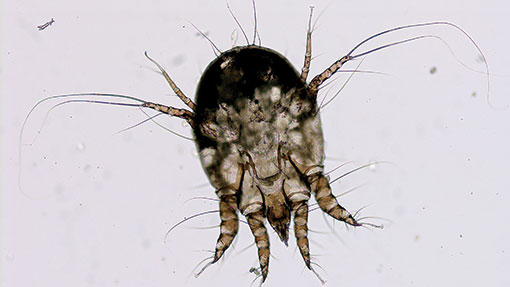Tips on keeping cattle scab out of beef and dairy herds

Beef and dairy farmers are being urged to remain vigilant following Scotland’s first case of cattle scab in 30 years, particularly those who have imported animals from higher risk areas.
The case confirmed earlier this week involved a calf on a borders farm in Scotland that was recently imported with its sucker cow mother from outside Great Britain.
Cattle scab, also called psoroptic mange, is caused as mites scrape the surface of the skin, feeding off it as they go.
“Cattle scab is very severe skin disease with significant health, welfare and economic impacts,” says Helen Carty of SAC Consulting Veterinary Services. “Irritated animals don’t eat as much and if skin is broken there may be secondary infection leading to production losses.”
See also: Take our academy on diseases and pests in cattle to earn valuable CPD points
So what are the symptoms and what should farmers do? Ms Carty urges farmers to seek prompt veterinary advice and get a proper diagnosis should they see any of these symptoms.
Symptoms
- Hair loss
- Moist red skin patches
- Itching
- Irritation/restless behaviour
- Broken skin/bleeding
- Scabs and crusts
- Skin thickening
- Weight loss
- Poor milk yield
- Miniscule yellow – white mites.
However, she warns the condition can be difficult to detect, depending on how active the mites are and how much they are feeding.
“In current temperatures the mites are becoming less active, so although signs may disappear, there is still an infestation present and a possibility of silent carriers. Without the correct treatment, they will resurge when the temperature cools this autumn.
Affected areas are likely to be seen where the animals can scratch themselves – for example, the shoulders, back and tail head.”
Ms Carty says early diagnosis should result in quicker treatment. But if there is a long period before detection or correct treatment, the increased skin damage will take longer to heal, leading to higher losses of productivity.
Imports
Cattle imports remain an imminent risk, particularly from higher risk areas such as south-west England, Yorkshire and Wales plus mainland Europe and Ireland, where scab has been detected.
“Buying in animals is a risk. Farmers should be careful about the source, inspect the animals and avoid buying stock with any lesions where possible,” she says.
The mite can be spread through direct contact, but is also able to live for about 14 days in the environment off the animal. This may allow for other cattle to pick up the parasite from infected cattle pens or transport lorries, says Ms Carty.
Ms Carty recommends a minimum quarantine period of one month for any animals entering a farm. But this is by no means “foolproof”, she says, due to the difficulty of detecting silent carriers.
“Any that show signs must remain in quarantine until treatment is successful.” But she adds that it is worth testing to check treatment has been fully successful.
- Scottish farmers and their vets who suspect can take advantage of the free testing of skin scrapings and blood samples by contacting their local SAC Consulting Veterinary Services Disease Surveillance Centre.
